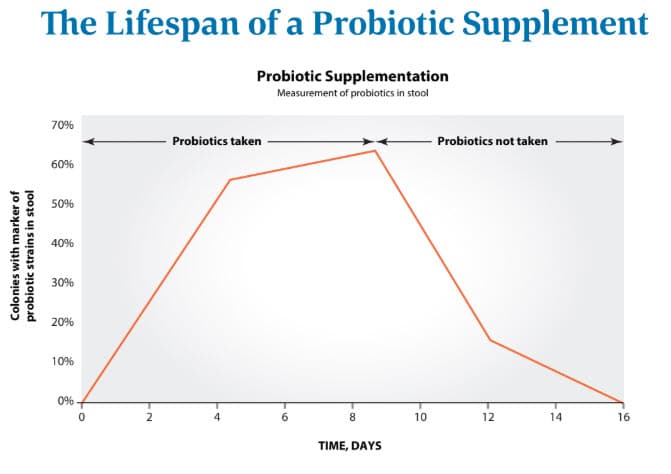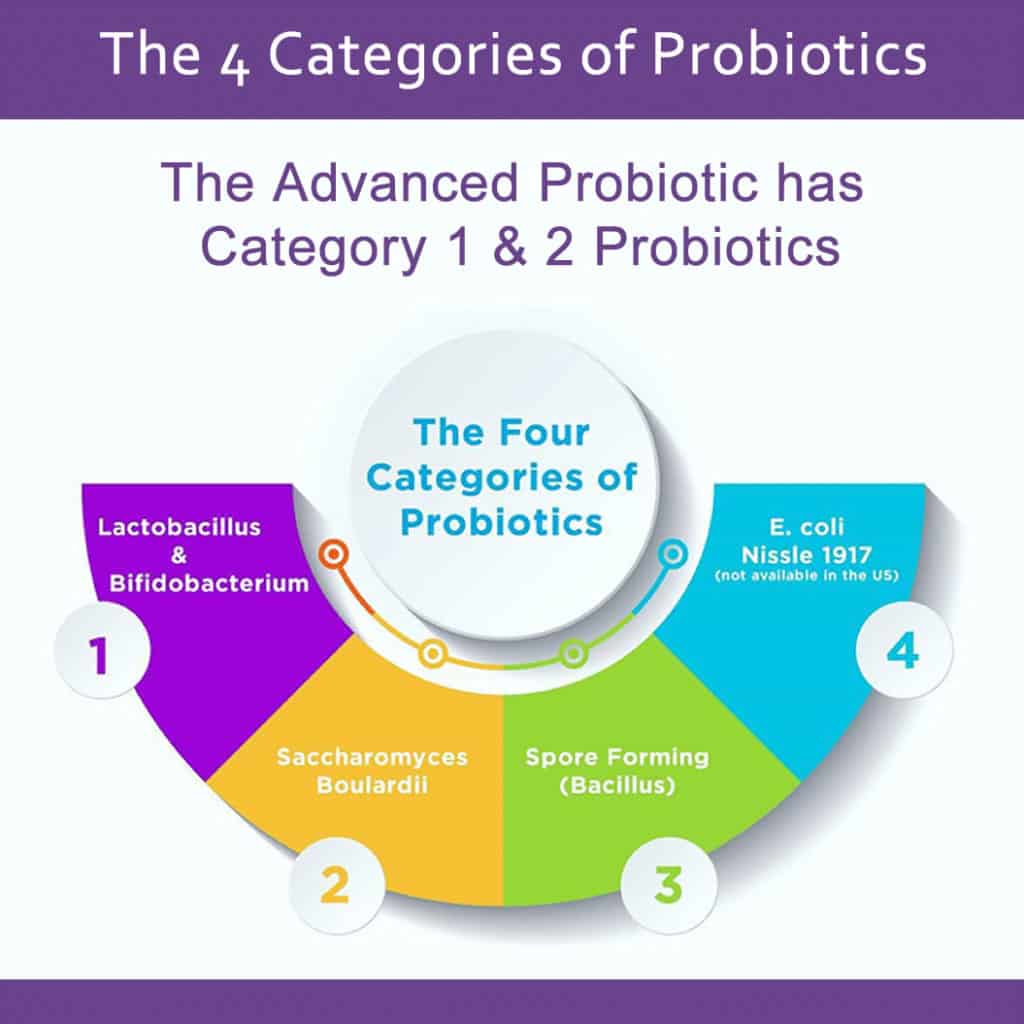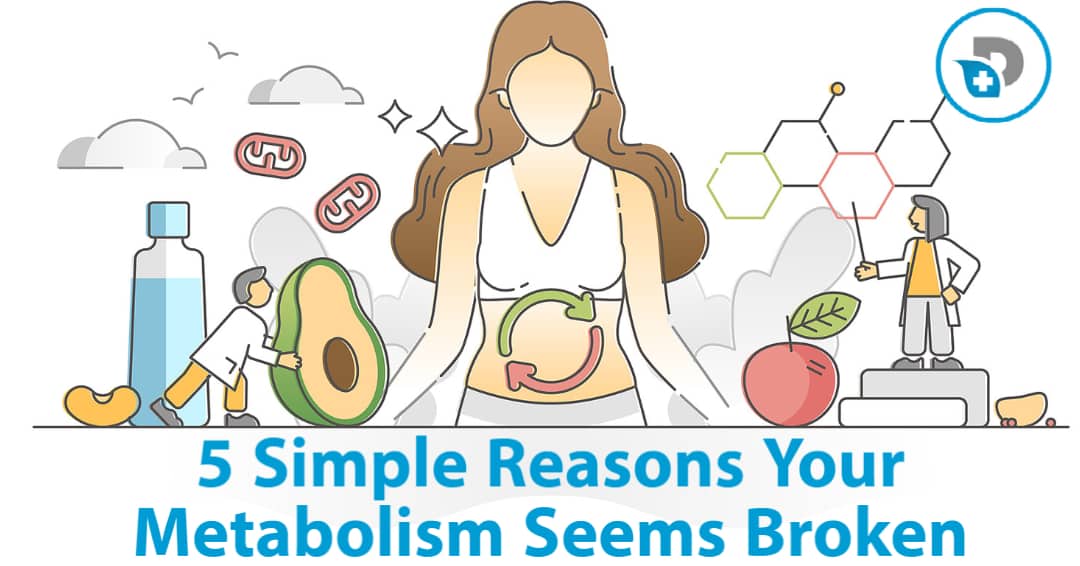
Make Sure Your Probiotic Has the Right Dosage
Probiotics are bacteria that can survive in the human GI tract and temporarily colonize the gut.
But they only survive approximately 1-2 weeks after ingestion, and should be considered transient members of the microbiome.
This is why it's important to make sure that your probiotic has at least 10 Billion organisms per dosage.
Some of the bacteria in your probiotic are bound to die during transit to your intestines, so the more that you ingest, the greater the chance of an effective colonization.
And remember, because they're transient you only get the benefit of probiotics when you take them consistently.
Probiotics consist of several “GOOD BACTERIA” that help to enhance the function of other bacteria in our body as well as protect you from “BAD BACTERIA” or pathogenic organisms.
Because probiotics are transient, regular use of probiotics provides optimal digestive and wellness support for your body.
Furthermore, it's important to know that certain species of probiotics have greater survivability than others.
This leads me to the second point I have to make on How to Pick a Good Probiotic
Make Sure Your Probiotics Can Survive In Your Digestive Tract
Because probiotics are live organisms, there are many challenges associated with manufacturing and distributing probiotic supplements.
For a probiotic to be effective, it must be shelf-stable through the expiration date and precisely delivered to the intestinal tract, where it can have maximum benefit.
This is why I have chosen to use BioShield® technology in the formulation of my Advanced Probiotic formula.
BioShield® technology is an innovative manufacturing process developed to ensure consistent and reliable results in the delivery of nutraceuticals.
The microorganisms in the Advanced Probiotic are protected, sealed and freeze dried away from moisture, heat, light and oxygen.
This allows the bacteria to remain dormant until they are exposed to moisture in the GI tract.
By utilizing advanced encapsulation technology, the probiotic organisms are preserved and released on-target for maximum benefit.
Our lab studies show that the capsules make a big difference in the deliverability of a probiotic.
Shockingly, only 4% of probiotics survive when they don't have the proper delivery vehicle or capsule.
But let's say your probiotics do make it into your digestive system and colonize. The next step is to make sure you have a healthy diversity of species.

Make Sure Your Probiotic Has Multiple Strains
There are now thousands of different probiotics on the market.
But when it comes to clinical evidence and human clinical trials, there are only 4 categories (and really only 5 species) that we should consider.
Understanding the benefits of various probiotic strains and how they affect digestive health is essential in order to properly evaluate which probiotic is the best supplement for you.
The image below identifies the 4 categories of probiotics that you should start experimenting with. *Note – Only Category 1 to 3 is available in the US.

As you can see from the chart above. The Four Categories of Probiotics and their species include:
- Lactobacillus & Bifidobacterium
- Saccharomyces Boulardii
- Bacillus
- E. Coli
A good probiotic will have a combination of the species of more than 1 category.
The Advanced Probiotic contains Category 1 (Lactobacillus and Bifidobacterium) and Category 2 (Saccharomyces Boulardii).
All you have to do is look at your probiotic's label and see how many species it contains.
Summary
As you may know, there are now thousands of probiotics on the market and picking a good probiotic is tough.
But all you really have to do is look at the
- Dosage
- Survivability
- Diversity
Make sure your probiotic has at least 10 Billion organisms per capsule.
Make sure that It's protected in a capsule or packaged in a way that can actually survive the harsh environment of our stomach.
See how many different strains and categories of bacteria your probiotic has.



